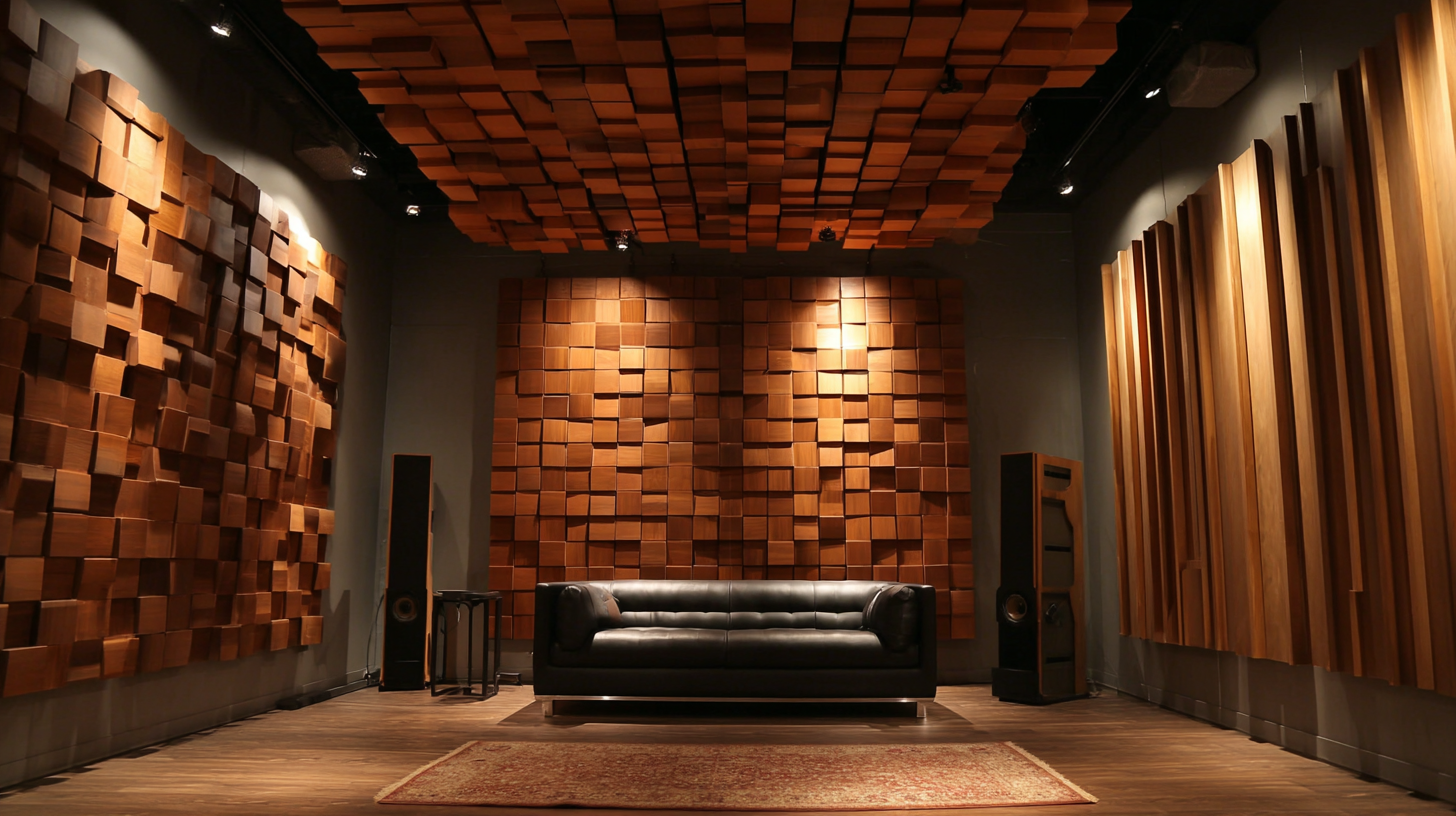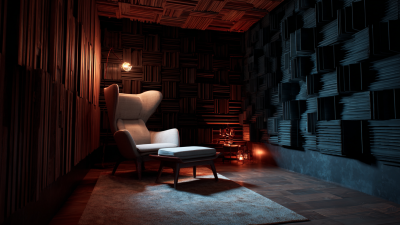Unlocking the Secrets of Sound Dampening Techniques for a Quieter Home Environment
In today's fast-paced world, finding a tranquil space within our homes has become increasingly important. One effective solution to achieving a quieter ambiance is through the implementation of sound dampening techniques. Sound dampening refers to the methods and materials used to reduce sound transmission and minimize noise levels in our living environments. Whether you're battling the echoes in a large room, the clamor from outside traffic, or the everyday noise from family activities, understanding and employing sound dampening strategies can significantly enhance your home's comfort. In this guide, we will explore various sound dampening techniques, from simple DIY projects to the use of specialized materials, enabling you to create a serene sanctuary for relaxation and peace, ultimately unlocking the secrets to a quieter home environment.

Effective Materials for Sound Dampening in Home Design
When it comes to creating a quieter home environment, the materials you choose for sound dampening can significantly impact overall effectiveness. According to a report by the National Institute of Health, effective sound dampening can reduce noise levels by up to 30 decibels, making a noticeable difference in comfort and tranquility at home. Common materials that excel in sound absorption include acoustic panels, mass-loaded vinyl, and soundproof drywall. Each of these materials works by either absorbing sound waves or blocking them from traveling through walls and floors.
Tips: Consider using heavy drapes or thick carpets, as they not only add to the aesthetic of your home but also provide additional layers of sound absorption. Incorporating these materials in rooms where noise levels tend to be high, such as home theaters or offices, can enhance the overall sound experience. Additionally, rubber underlayments for flooring can substantially reduce noise transmission, creating a more serene environment.
Incorporating multiple layers of sound-dampening materials can amplify the quality of sound insulation. For instance, using a combination of acoustic tiles on the ceiling paired with insulated walls can help control reverberation and prevent sound leakage. The right materials, when strategically layered, can transform any room into a quieter sanctuary.
Understanding the Science Behind Sound Waves and Absorption
Sound waves are vibrations that travel through air, water, or solid materials, and their behavior can significantly affect the acoustic quality of our home environments. Understanding the science behind sound waves is essential in applying effective sound dampening techniques. Frequency, measured in hertz (Hz), plays a crucial role in how sound is absorbed or reflected. Low-frequency sounds, such as bass notes from music, can travel through walls and structures, often creating reverberations and noise pollution that disrupt daily life. Research by the National Institute of Standards and Technology (NIST) indicates that materials like fibrous insulation can absorb up to 90% of sound energy in the mid to high-frequency range, providing an effective barrier against unwanted noise.
Absorption materials work by transforming sound energy into heat through internal friction, a process that becomes increasingly effective with the porosity and density of the material. According to data from the Acoustical Society of America, soundproofing solutions such as acoustic panels and soundproofing carpets can reduce noise levels by up to 50%, significantly enhancing home tranquility. Furthermore, utilizing double-glazed windows not only improves energy efficiency but also reduces outside noise penetration by up to 20-30 dB. By strategically applying these sound dampening methods, homeowners can create a more serene living environment conducive to relaxation and productivity.
Unlocking the Secrets of Sound Dampening Techniques for a Quieter Home Environment
| Technique | Sound Reduction (dB) | Material Used | Installation Difficulty | Cost Estimate ($) |
|---|---|---|---|---|
| Acoustic Panels | 25-50 | Foam/Polyester | Moderate | 50-200 |
| Soundproof Curtains | 15-30 | Thick Fabric | Easy | 25-100 |
| Mass Loaded Vinyl (MLV) | 30-50 | Vinyl Compound | Moderate | 1-3 per sq ft |
| Double Glazing Windows | 30-50 | Glass/PVC | Difficult | 300-800 |
| Carpet with Padding | 10-25 | Fiber/Padding | Easy | 2-8 per sq ft |
Tips for Choosing the Right Curtains and Rugs for Noise Reduction
When it comes to achieving a quieter home environment, selecting the right curtains and rugs can significantly enhance sound dampening. Thick, heavy curtains made from materials like velvet or polyester can absorb sound waves, preventing noise from entering or escaping your space. Look for curtains that extend beyond your window frames and reach the floor, as this creates a more effective barrier against sound. Installing them with a snug fit on the curtain rod helps minimize gaps through which noise can travel.

Rugs play a crucial role in reducing sound as well. Opting for plush, thick rugs can dramatically dampen footsteps and other noises on hard floors. Consider layering rugs for added insulation, especially in spacious areas or rooms with high ceilings. Natural fibers, such as wool, not only provide aesthetic appeal but also contribute to sound absorption. By thoughtfully selecting and placing rugs alongside your curtains, you can create a harmonious environment that fosters peace and tranquility while stylishly enhancing your home decor.
DIY Soundproofing Solutions for Budget-Conscious Homeowners
Creating a quieter home environment doesn’t have to break the bank. There are several DIY soundproofing solutions that budget-conscious homeowners can implement to significantly reduce noise levels. One effective method is the use of heavy curtains or thermal drapes. These not only add to your home’s aesthetic but also help absorb sound waves, making them a simple and stylish way to minimize noise from outside.
Another cost-effective solution involves adding rugs or carpets to your floors. Hard surfaces can amplify sound, so layering your floors with fabrics can help dampen noise. Consider using thick rugs in high-traffic areas or near noise sources to enhance sound absorption.
Additionally, sealing gaps around windows and doors with weather stripping can prevent sound leakage. This small investment can make a noticeable difference in keeping unwanted noises at bay. By incorporating these tips into your home, you can enjoy a more peaceful living space without spending a fortune.
Sound Dampening Techniques Effectiveness
Optimizing Room Layouts to Minimize Noise Pollution
When it comes to creating a quieter home environment, optimizing room layouts is a crucial strategy to minimize noise pollution. The arrangement of furniture and the positioning of different rooms can significantly influence sound travel. For instance, placing noise-sensitive areas, such as bedrooms and home offices, away from high-traffic zones can greatly reduce disturbances. Additionally, using bookshelves or large furniture pieces as buffers against walls can help absorb sound, making spaces more tranquil.
Furthermore, the selection of flooring materials and wall treatments also plays a vital role in sound dampening. Carpets and rugs can effectively muffle footsteps and echoes, while wall hangings or acoustic panels can mitigate sound reflection, especially in open-concept designs. By thoughtfully designing layouts with noise reduction in mind, homeowners can foster a more peaceful atmosphere, leading to increased comfort and productivity within their living spaces.

Related Posts
-

Creating Your Perfect Soundproof Room for Ultimate Peace and Quiet
-

Exploring Innovative Sound Deadening Panels at the 138th China Import and Export Fair 2025
-

Exploring the Science Behind Soundproof Rooms: Key Noise Reduction Techniques and Benefits for Homeowners
-

Exploring the Benefits of Soundproof Rooms for Enhanced Productivity in Home Offices
-

Transform Your Space: The Surprising Benefits of Acoustic Ceiling Tiles Explained
-

Discover the Science Behind Sound Proof Panels: How They Transform Your Space into a Quiet Oasis

